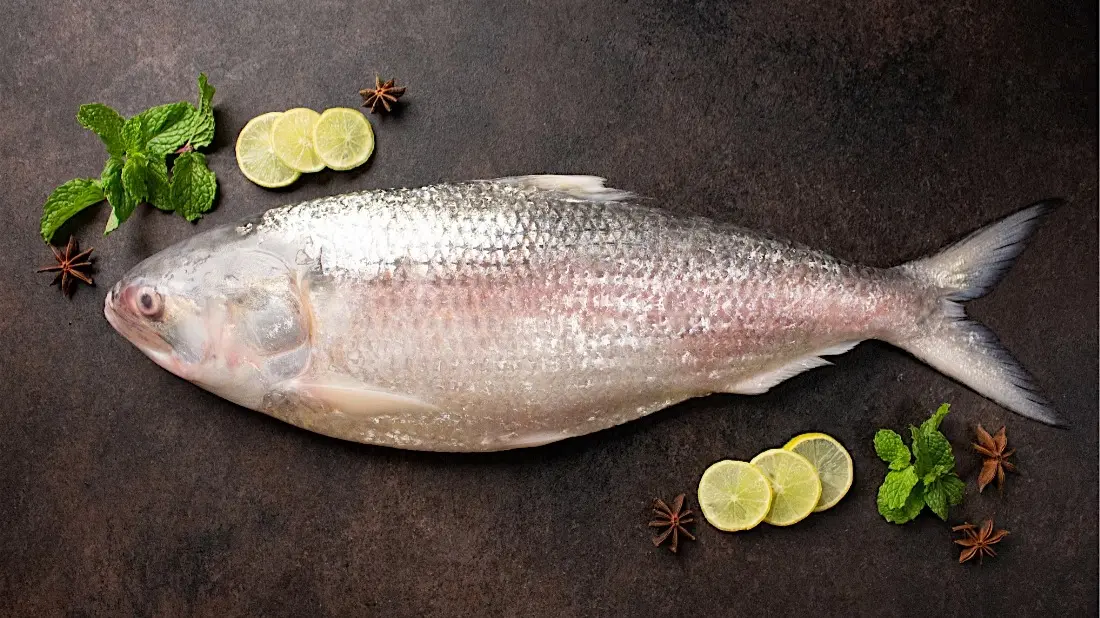Updated 10 September 2024 at 18:41 IST
Bangladesh Bans Padma Hilsa Export To India, Prices Likely To Cross Rs 2,000
Hilsa from Bangladesh, which was priced between ₹1,800 and ₹2,000 per kilo a few months ago, is now expected to cost between ₹2,200 and ₹2,400 per kilo.
- India News
- 3 min read

Hilsa Ban: As the Durga Puja festival approaches, West Bengal’s Bengalis are facing the prospect of significantly higher costs for Hilsa (ilish) fish. The price surge is attributed to a recent ban imposed by Bangladesh ’s military-backed interim government on the export of Hilsa to India.
The ban was confirmed by Farida Akhter, advisor to the Bangladesh Ministry of Fisheries and Livestock, who stated that the restriction aims to ensure adequate local supply. “We cannot allow ilish to be exported while our people cannot buy them. This year, I have instructed the Ministry of Commerce to prevent any ilish exports to India during Durga Puja,” Akhter told the Dhaka Tribune.
Historically, under former Prime Minister Sheikh Hasina , Bangladesh maintained a tradition of exporting large quantities of Padma Hilsa fish to India during key festivals. However, with Hasina’s recent exile and the new interim government in power, this practice has ceased.
The export ban on Hilsa is not new; Bangladesh had previously imposed such restrictions in 2012 due to disputes over the Teesta River water-sharing agreement. Despite the ban, special exemptions were made for significant festivals, including Durga Puja. The ban was briefly lifted in 2022, allowing for substantial shipments, such as the 3,950 tonnes of Hilsa sent in September 2023. This year, however, the renewed ban is expected to impact availability and prices.
Advertisement
Retailers in India anticipate a sharp increase in Hilsa prices. According to reports, Hilsa from Bangladesh , which was priced between ₹1,800 and ₹2,000 per kilo a few months ago, is now expected to cost between ₹2,200 and ₹2,400 per kilo in Delhi's CR Park market. Despite alternative sources from Odisha , Myanmar, and Gujarat , the scarcity of the prized fish is likely to drive prices higher.
Factors Behind the High Price of Hilsa
1. Scarcity and Demand: Once abundant in the Bay of Bengal, Hilsa populations have dwindled due to overfishing and increased demand. This scarcity has driven up prices significantly. The fish's limited availability during specific seasons further fuels its high cost.
Advertisement
2. Seasonality: Hilsa is only available for a few months each year, adding to its exclusivity and desirability. Its seasonal nature makes it a sought-after treat, especially during peak times like Durga Pujo and weddings.
3. Culinary Versatility: Hilsa is valued for its unique flavor and soft texture, making it a versatile ingredient in various culinary preparations, including frying, grilling, smoking, and steaming. Its distinctive taste contributes to its high demand.
4. Nutritional and Cultural Significance: Rich in essential nutrients, Hilsa is appreciated for its health benefits. It holds cultural importance in both Bangladesh , where it is considered a national dish, and India, where it is enjoyed during special occasions.
5. Sustainability: Despite the high demand, Hilsa is managed sustainably by both Bangladesh and India to prevent overexploitation. This responsible management helps preserve the fish’s population but can also contribute to higher prices due to conservation efforts.
Published By : Isha Bhandari
Published On: 10 September 2024 at 18:29 IST
